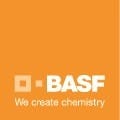BASF Expands Its High-Performance Wall Systems Portfolio
Building practices are slow to change and for good reason. Home builders need trusted solutions to ensure a high quality finished product. At the same time, there is a need for easy solutions to meet new and evolving code requirements without fundamentally altering building techniques. The HP+TM A-Series by BASF presents a simple solution and is an important addition to the HP+ Building Enclosure Solutions portfolio.
The system combines ¾” WALLTITE® HP+ High Performance insulating air barrier material with traditional fill insulation in the wall cavity. This application is often referred to as a flash-and-batt or hybrid insulation system.
Advantages of the A-Series
- Can reduce lumber content by up to 25% with advanced framing techniques
- Increased lateral load capacity of a typically full sheathed 2x4 wall with 7/16” OSB wall
- Improved moisture management, which can boost structural performance and reduce callbacks
- Achieve an R-13 to R-23 in a 2x4 building construction configuration
Solution to fulfill code requirements
This approach to energy efficient wall systems is growing in popularity because it addresses the need for air barriers and fewer air changes that are now required by residential code. The A-Series wall system has even helped builders comply with the air change per hour requirement of the IECC 2015 code.
A simple wall system for builders
The A-Series is praised by builders because it doesn’t require them to change their current construction practices and it’s easy to incorporate into existing plans.
“The A-Series wall system helps builders meet their goal of providing the best and most affordable home possible for their buyers,” says Rick. “We see the system as an excellent way to move the needle towards more energy efficient homes in the future.”
Greater structural strength
Another benefit of the A-Series is the additional structural strength it provides. This feature allows builders to move to 24” on center framing and keep 2x4 stud dimensions. This results in walls that are up to 25% stronger than a typically-constructed wall.

